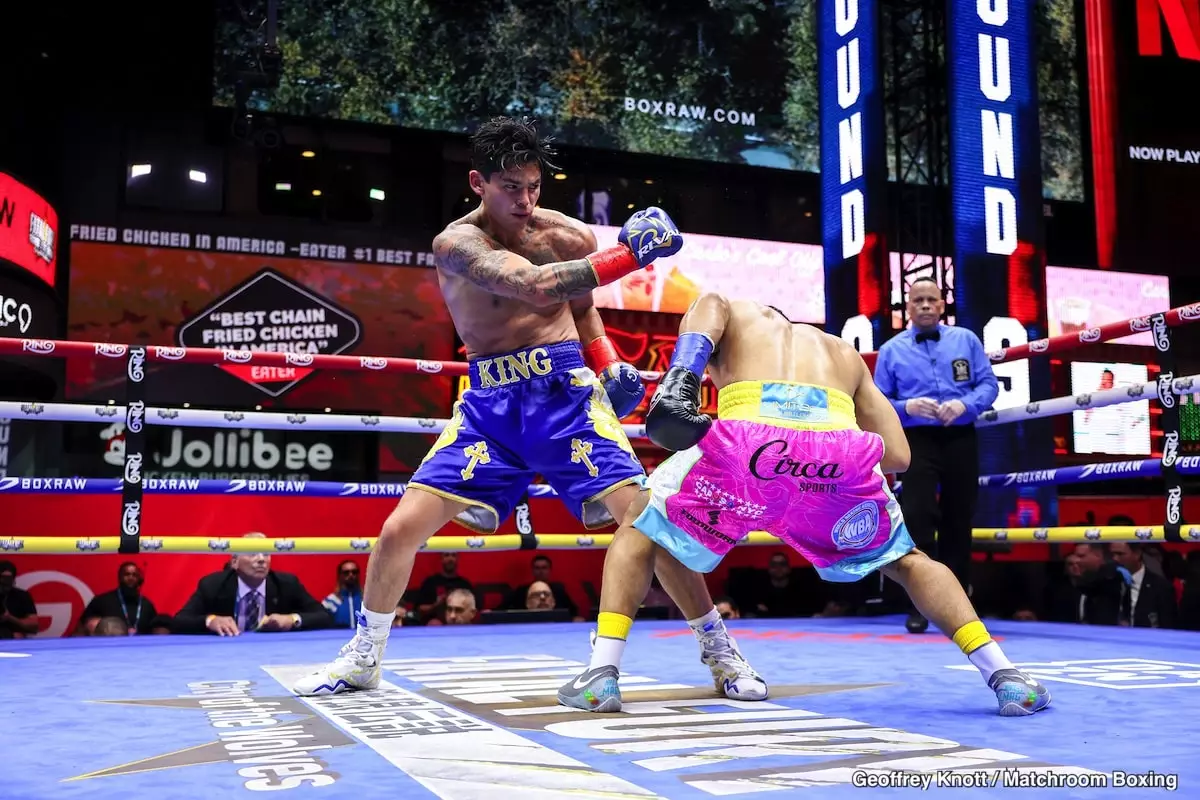The recent bout between Ryan Garcia and Rolando ‘Rolly’ Romero has sparked a debate that transcends the realm of mere sports commentary. Lionel Thompson, in a scathing critique, asserted that after Garcia’s lackluster performance that night, he should either “get a job” or revert to being a “YouTube sensation.” Such statements reveal a deeper flaw within today’s boxing—where social media followers often overshadow genuine talent and fighting prowess. Garcia, branded as a rising star in the welterweight division, was painfully exposed as an “ordinary” fighter in his defeat against Romero. This raises profound questions about the criteria we employ to define a champion in contemporary boxing.
Garcia’s fight against Romero was a textbook demonstration of how vulnerability can unravel a contender. After being knocked down in the second round by a left hook, Garcia retreated into a defensive shell, abandoning his once-promising offensive strategy. Thompson noted that Garcia appeared to be “walking on eggshells,” a vivid metaphor that encapsulates the fear and hesitation that plagued him throughout the bout. Thus, we witness a glaring disconnect between the expectations placed on highly-touted fighters and the reality of their skill sets when tested against genuine competition.
Assessing the Fight Metrics
An analysis of the fight’s statistics is revealing. Garcia landed only 31.4% of his punches, while Romero, despite being the underdog, achieved a slightly lower yet more effective 20.2%. This disparity illustrates not just a lack of output on Garcia’s part, but a significant inefficacy in applying any semblance of strategy. Instead of capitalizing on his opportunities, Garcia’s performance felt like the embodiment of a fighter paralyzed by the fear of failure—a fear that resulted in an abysmally low punch output, with only one significant jab employed before retreating.
Thompson’s assessment of Garcia’s tools in the ring also illuminated a critical oversight in his training regimen. Garcia’s left hook has been heralded as his primary weapon; however, if it is a fighter’s only reliable asset, what happens when the opponent is adept at evading or countering that signature move? As Thompson astutely pointed out, Garcia’s right hand appears “like a vestigial feature,” suggesting that his reliance on one punch ultimately limits his offensive capabilities and exposes his weaknesses. A fighter who isn’t equipped with a diverse arsenal is fundamentally at a disadvantage in high-stakes matchups.
The Manufactured Image of Modern Fighters
Drawing from Thompson’s critiques of the industry, it is compelling to address the aspect of perception versus reality in boxing. Many of today’s fighters are crafted not merely through their skill in the ring but also through savvy marketing and social media presence. Garcia, alongside fellow fighters like Devin Haney and Teofimo Lopez, has amassed a substantial following that can be more indicative of promotional efforts rather than concrete achievements in the sport. Thompson’s comments regarding these “manufactured fighters” resonate deeply, highlighting how the industry’s structure often elevates names based on popularity rather than raw talent.
The implications of this manufactured image are significant for the sport itself. Promoters often place fighters in strategically curated bouts, designed to enhance their perceived value and marketability, rather than risking them in matchups that could challenge their standing. Such tactics dilute the essence of competition and obscure the true benchmarks of success—a concept that reverberates across numerous sports but appears to be particularly pronounced in boxing due to its turbulent financial landscape.
A Path Forward for Ryan Garcia
In light of this criticism, one cannot help but contemplate what lies ahead for Ryan Garcia. The consensus may be that he will push for a rematch with Devin Haney as a means of securing a more lucrative pay day, avoiding potential rematches with Romero, who exposed his fragility. The game plan appears to favor monetary considerations over a genuine quest for improvement in his skills.
Boxing enthusiasts and analysts alike must confront a sobering reality: the sport is at a crossroads. As the lines blur between genuine athletic prowess and the allure of social media fame, there is an urgent need to reevaluate how we define success in the ring. Are fighters destined to become public figures lacking substance, or can we usher in a new era that prioritizes skill over spectacle? In this fascinating intersection of hype and reality, Ryan Garcia’s future will certainly lead the charge into this evolving narrative.


Leave a Reply